Well Happy Friday, everyone. Today’s chart is a serious subject: the (brief) recovery of the S&P 500. But because this is Friday, take a look at the annotations on the chart.
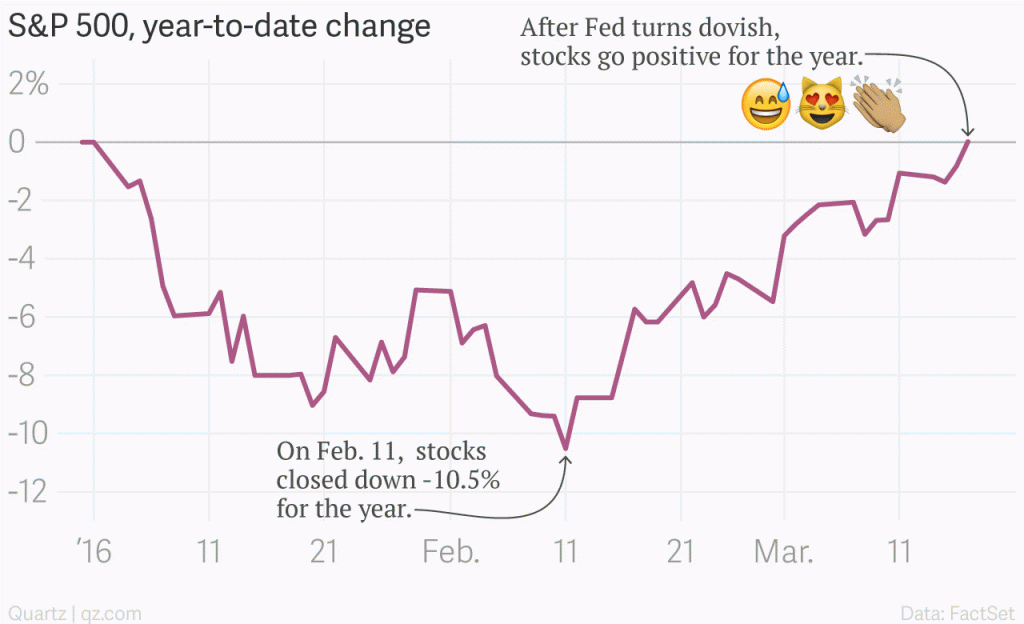
Credit for the piece goes to Matt Phillips.
Organisations that forecast things are not often inclined to go back and review their forecasts against the actual results. So that makes today’s post from the Wall Street Journal fascinating. They reviewed the Federal Reserve’s forecasts for US GDP growth against the actual growth. And it turns out the Fed consistently overestimated US growth.
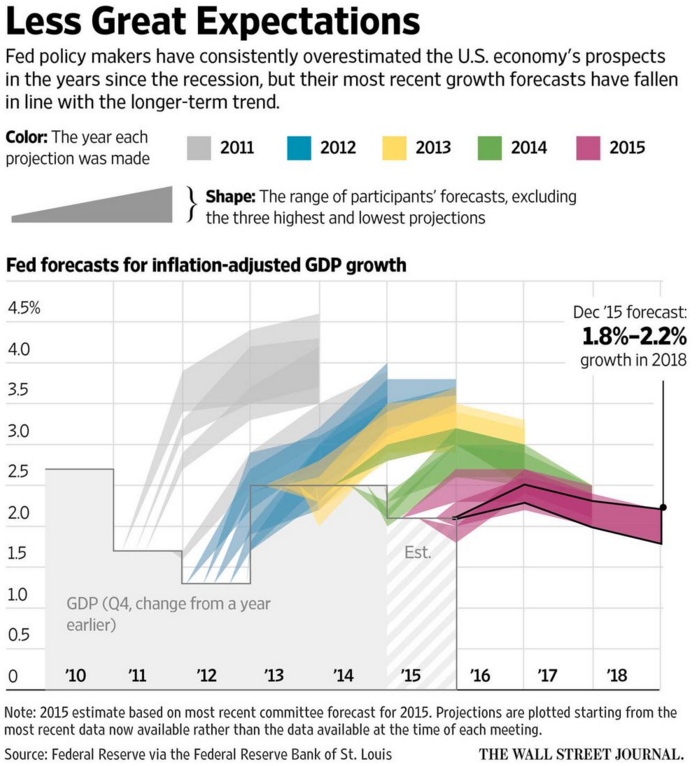
From a design standpoint, what makes this piece interesting is how they presented the range of forecasts. After all, it would otherwise become a plot of squiggly spaghetti lines. Instead, they used colour to group each projection set. A smart idea. Plus a nice literary allusion. I mean if you like Dickens.
Credit for the piece goes to the Wall Street Journal graphics department.
Today we are looking at a smaller piece from the Washington Post. The graphic fits within an article about US stock prices. What the graphic does is show the total scale, i.e. starting the chart on the 0 axis, and then showing in detail the fluctuations near the maximum end of the scale. And yet all of this done as an inset graphic. It need not be a full-width graphic, because the data does not demand it.
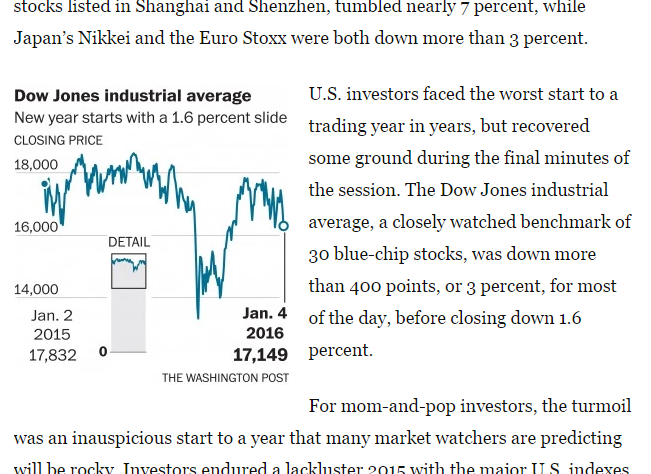
Credit for the piece goes to the Washington Post graphics department.
You should all know by now I am sucker for small multiples. So it should come as no surprise to you that I liked this piece from Friday from the Wall Street Journal. It looks at payroll and wage growth across various sectors in the American economy. And what I really like is that they took a space at the beginning to explain how to read the charts.
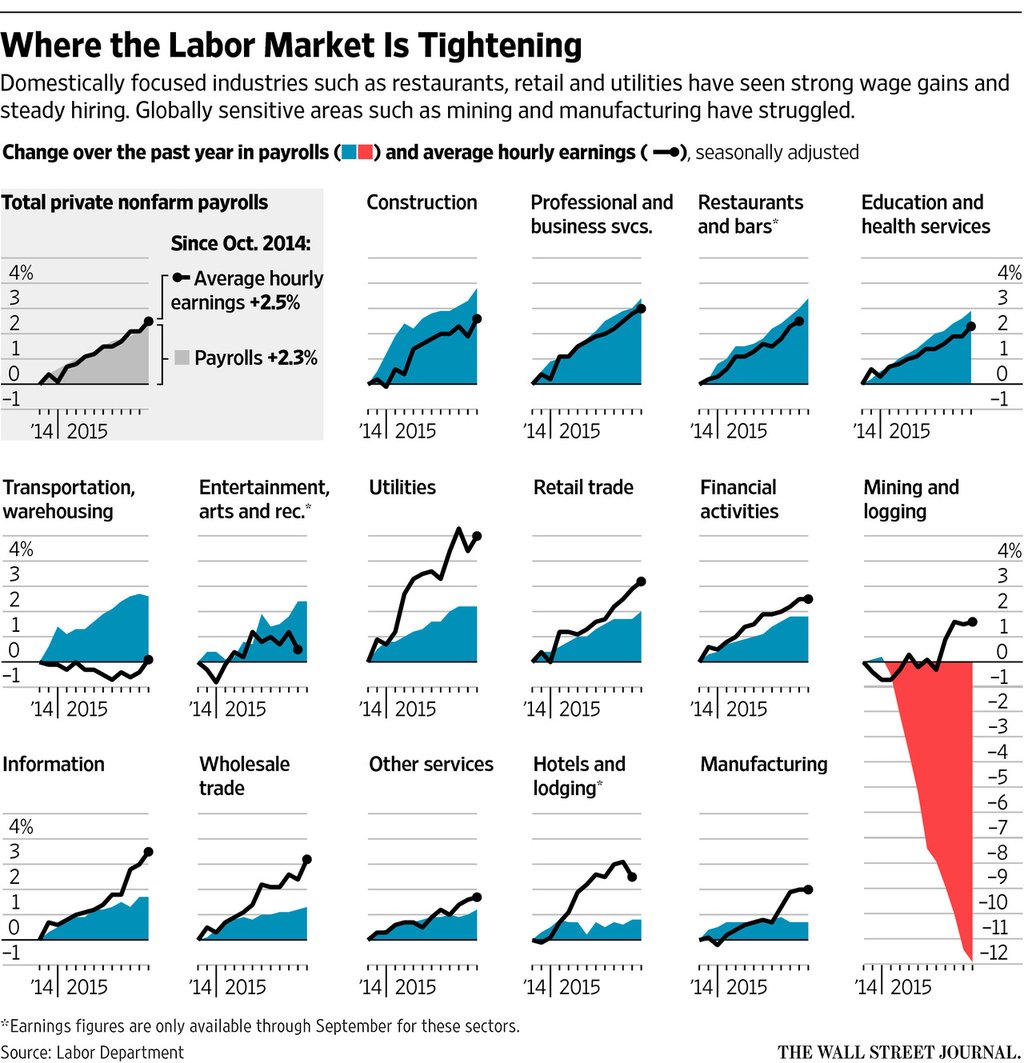
Credit for the piece goes to the Wall Street Journal graphics department.
With Xi Jinping visiting the United States the BBC published an article looking at China’s changes over the years. In general, I don’t like the article—why are they using pigs to look at pork consumption? My general dislike aside, they do have a map that plots urban centres with more than one million people and how that map has changed since 1970 and will change out to 2030.
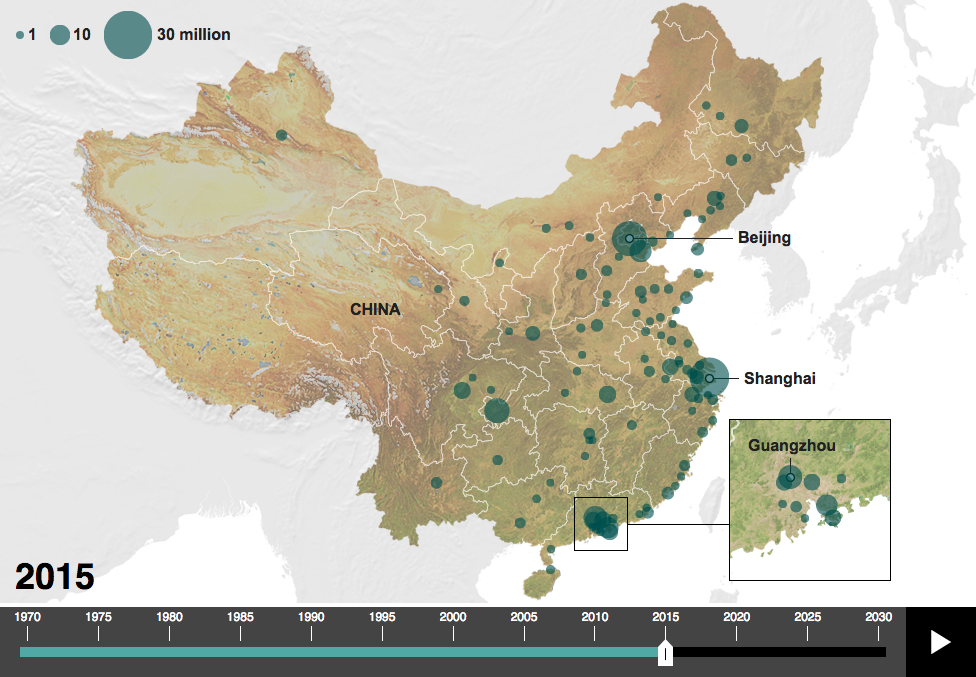
I probably would not have used that terrain map as the background as blue-green circles on the green coast are a bit difficult to read. A lost opportunity of a sort—assuming it is possible at all—is to use a satellite image of China for each year and overlay the circles on that. One can only imagine that China’s urbanisation has gone together with drastic changes to the landscape.
Credit for the piece goes to the BBC graphics department.
I just spent the weekend back in my hometown of Philadelphia and while we walked most places, there were a few Uber rides. As someone who doesn’t use the app and normally will hail a taxi when necessary, I had been looking forward to posting this piece. FiveThirtyEight looked at data for New York comparing Uber to taxis.
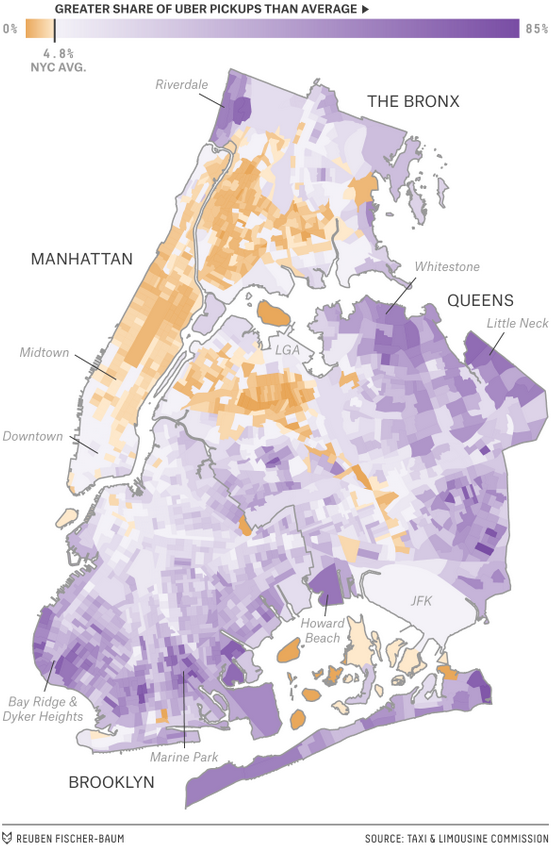
Credit for the piece goes to Reuben Fischer-Baum.
The minimum wage of $15 per hour does not necessarily mean the same thing to everyone all across the country. Based on where one lives, the purchasing power of a dollar might make minimum wage worth more or less than $15. The Pew Research Centre put together a map showing where $15 is worth more or less.
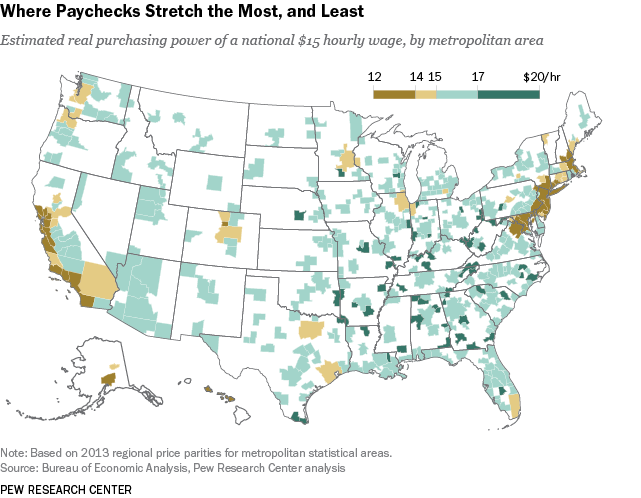
Credit for the piece goes to the Pew Research Centre.
In today’s post we look at a graphic made by the South China Morning Post to explain the Greek Crisis. The graphic does a nice job anchoring the story in a combined chart and timeline. The reader then continues down the piece learning about additional points from demographics to text-based explanations.
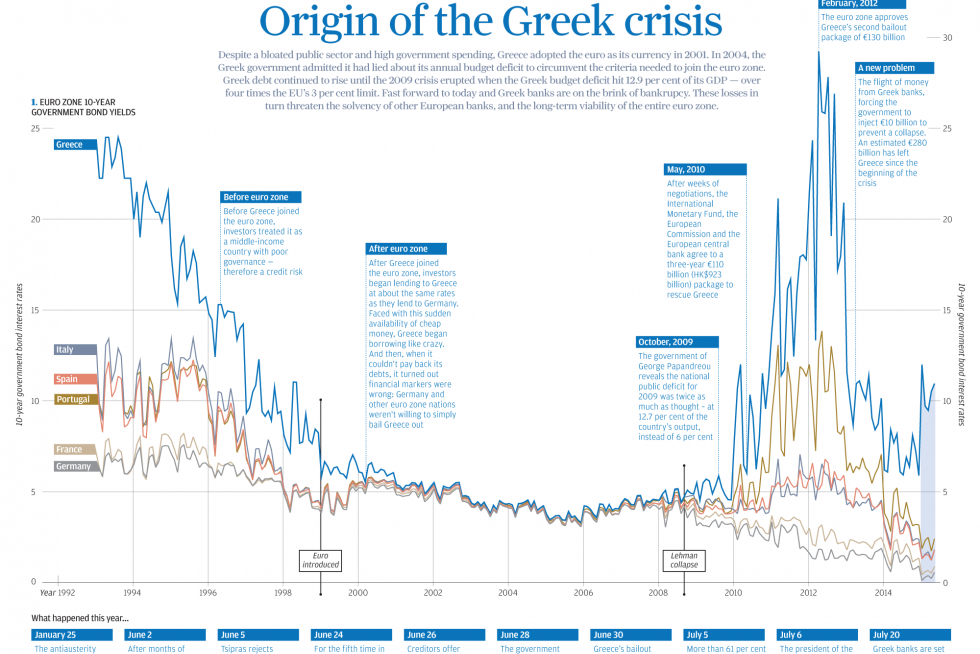
Credit for the piece goes to the South China Morning Post graphics department.
Last week we looked at the New York Times piece on where you grew up’s impact on future income. This week, we look at their follow-on piece, how your hometown impacts your odds of getting married. The piece includes some nice interactive choropleth maps, but my favourite part is the scatter plot correlating politics (as determined by 2012 election votes) to marriage. My hometown (‘s county) is highlighted in the screenshot below.
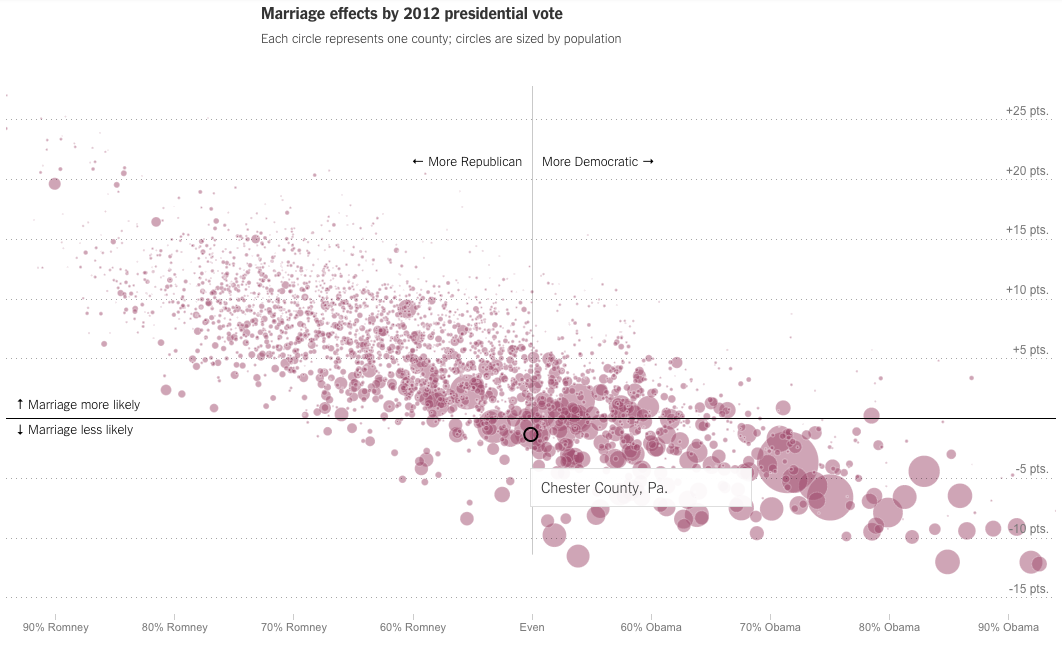
Credit for the piece goes to David Leonhardt and Kevin Quealy.
Today we have a really interesting piece from the New York Times. In terms of visualisations, we see nothing special nor revolutionary—that is not to say it is not well done. The screenshot below is from the selection of my hometown county, Chester County in Pennsylvania. Where the piece really shines is when you begin looking at different counties. The text of the article appears to be tailored to fit different counties. But with so many counties in the country, clearly it is being done programmatically. You can begin to see where it falls apart when you select rather remote counties out west.
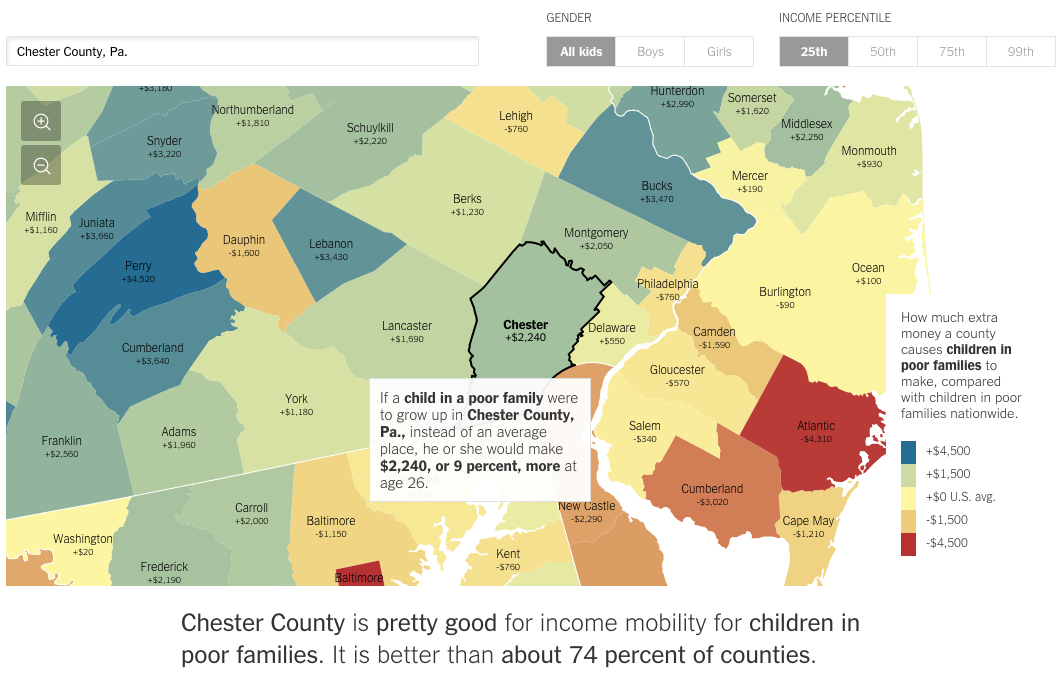
But it does not stop simply with location. Try using the controls in the upper right to compare genders or income quartiles. The text changes for those as well.
Credit for the piece goes to Gregor Aisch, Eric Buth, Matthew Bloch, Amanda Cox, and Kevin Quealy.